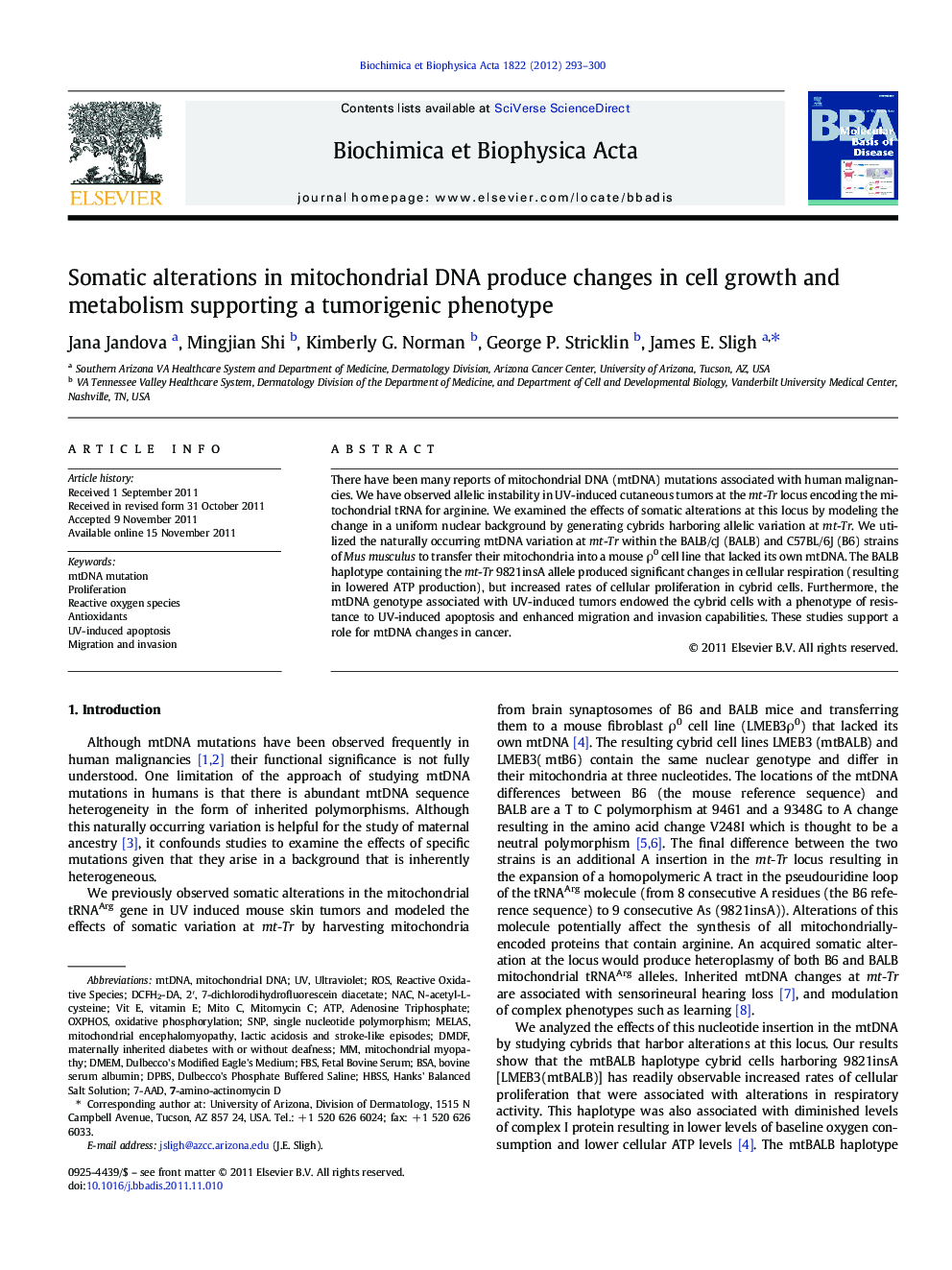| Article ID | Journal | Published Year | Pages | File Type |
|---|---|---|---|---|
| 1905032 | Biochimica et Biophysica Acta (BBA) - Molecular Basis of Disease | 2012 | 8 Pages |
There have been many reports of mitochondrial DNA (mtDNA) mutations associated with human malignancies. We have observed allelic instability in UV-induced cutaneous tumors at the mt-Tr locus encoding the mitochondrial tRNA for arginine. We examined the effects of somatic alterations at this locus by modeling the change in a uniform nuclear background by generating cybrids harboring allelic variation at mt-Tr. We utilized the naturally occurring mtDNA variation at mt-Tr within the BALB/cJ (BALB) and C57BL/6J (B6) strains of Mus musculus to transfer their mitochondria into a mouse ρ0 cell line that lacked its own mtDNA. The BALB haplotype containing the mt-Tr 9821insA allele produced significant changes in cellular respiration (resulting in lowered ATP production), but increased rates of cellular proliferation in cybrid cells. Furthermore, the mtDNA genotype associated with UV-induced tumors endowed the cybrid cells with a phenotype of resistance to UV-induced apoptosis and enhanced migration and invasion capabilities. These studies support a role for mtDNA changes in cancer.
► Cybrids are useful models to study the role of mtDNA changes in cancer development. ► Somatic mutations in mtDNA produce changes in cellular growth and motility. ► There are mtDNA-driven differences in production of intracellular ROS. ► Antioxidants were able to diminish the tumorigenic phenotypes of mutant cybrids. ► Mutations in mtDNA play important roles in the development of neoplasia.
